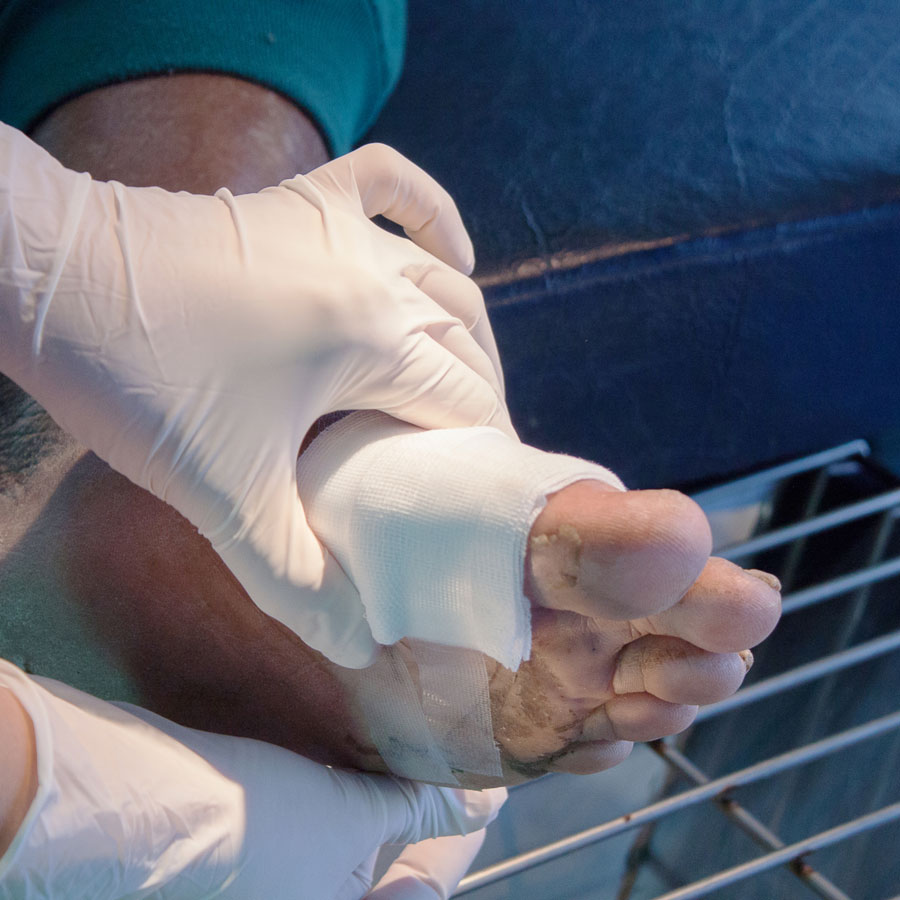Children’s heel pain is common and typically treatable, but can be frustrating to daily activities, sports, and growth if left untreated. Early examination and care allow your child to keep active, feel comfortable, and grow step by step.
What Is Pediatric Heel Pain?
Pediatric heel pain is pain in the rear or bottom of the heel in children and adolescents. It typically happens during growth spurts or with an acute rise in physical activity. In contrast to heel pain in adults, which is typically due to degenerative conditions, heel pain in kids is more apt to be due to growth plate stress, repetitive stress, or biomechanical factors.
The most typical cause is Sever’s disease (or calcaneal apophysitis), which is an inflammation of the growth plate of the heel where the Achilles tendon attaches. As bones, muscles, and tendons grow at different rates, this area might become inflamed with repetitive stress.

Common Causes of Pediatric Heel Pain
Understanding the causes of heel pain in children guides prevention and treatment. Certain common causes include:
- Growth plate stress (Sever’s disease) – The heel growth plate is vulnerable during growth spurts
- Overuse injuries – Sports or repetitive jumping/ running place additional stress on the heel
- Tight Achilles tendon or calf muscles – This creates additional tension on the attachment at the heel
- High arches or flat feet – Abnormal foot mechanics alter load distribution
- Worn-out, ill-fitting shoes – Inadequate cushioning or support can exacerbate irritation
- Increased activity abruptly – Abrupt increases in training or playing time
These factors often act together, rather than in isolation, to trigger symptoms.
How Pediatric Heel Pain Is Diagnosed
At Vale Foot and Ankle, our approach to diagnosing heel pain in children includes:
- A full review of symptoms, sports activity, and recent growth
- Physical exam to check joint flexibility, Achilles tightness, and foot structure
- Gait analysis to spot abnormalities in walking or running
- Imaging (if needed) to rule out fractures or joint abnormalities
This gentle, child-specific process helps pinpoint the problem and guide the right treatment.

Treatment Approaches for Pediatric Heel Pain
The overwhelming majority of heel pain is successfully treated with non-operative (conservative) methods. Our goal is to relieve pain, decrease inflammation, and treat contributing factors.
Non-Surgical Treatment for Pediatric Heel Pain
- Activity Modification – Restriction or alteration of high-impact activities for a period
- Ice & Rest – Using ice after activity, utilizing rest pauses
- Stretching & Strengthening – Specifically the calf, Achilles, and foot muscle groups
- Heel Pads or Cups – Provide cushioning and aid stress absorption
- Supportive Shoes & Custom Orthotics – Supportive shoes with appropriate inserts to improve foot mechanics
- Physical Therapy – A regimen to repair gait and muscle imbalance
These interventions usually lead to improvement within weeks to months. Most children recover without surgery.
When Pediatric Heel Pain Requires Surgical Care
- Surgery is not typical in the heel pain of children, but we do search for it when:
- Symptoms have persisted after many months of conservative treatment
- There is concern about structural damage, bone pathology, or alignment problems
- The pain heavily affects activities of daily living, sports, and growth
Surgical issues may include realignment surgeries, removal of bony prominences, or soft tissue equilibration. Being a surgical foot and ankle center, Vale Foot and Ankle has the capability to provide this high degree of care where necessary.
Preventing Heel Pain in Children
To reduce the risk of recurrence and protect healthy growth:
- Encourage gradual increases in physical activity rather than sudden jumps
- Ensure proper shoes with cushioning and arch support
- Continue daily stretching and strengthening routines
- Monitor for changes in walking or posture as the child grows
- Schedule routine checkups in pediatric podiatry for children engaged in sports or high activity
Early attention to symptoms and good foot care habits go a long way.
Why Choose Vale Foot and Ankle for Pediatric Heel Pain?
Heel pain in a child is not necessarily serious, but persistent or recurring issues can lead to compensatory gait abnormalities, long-term discomfort, and growth problems. At Vale Foot and Ankle, we provide:
- Pediatric-specific evaluation and comfort-oriented treatment
- A team experienced in both conservative and surgical management
- One-stop diagnosis and treatment, no referral out required
- Education and support for parents and children to contribute to long-term foot health
Book a Pediatric Heel Pain Evaluation Today
If your child is limping, complaining of heel pain, or attempting to avoid play, schedule a pediatric podiatry consultation today. Early treatment equals faster healing, better outcomes, and more stress-free play.
Contact us at Vale Foot and Ankle to start with quality pediatric heel pain care. We provide specialized pediatric care for young individuals with heel pain, employing both operative and nonoperative techniques for lasting relief.



